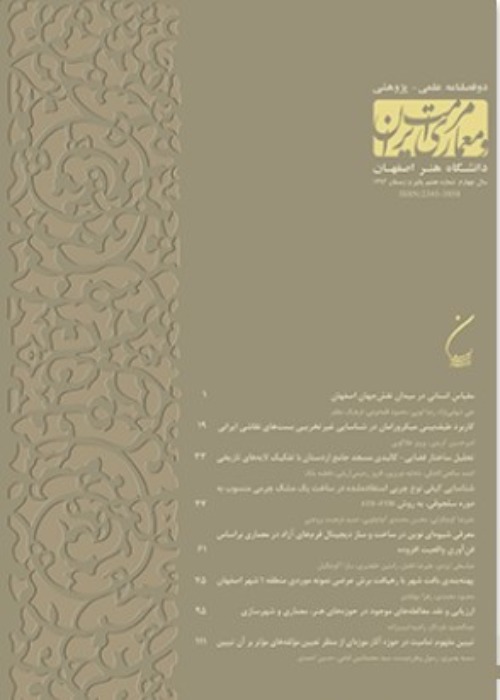An Enquiry into the Identification of the Executive Settings involved in the Creation of the Urban Landscapes in the Safavid Master Plan
Author(s):
Abstract:
The urban development of the city of Isfahan during the Safavid period was based on a preconceived plan and was brought to an end in a limited time. The Safavids were able to create valuable urban landscapes in the old city of Isfahan, and in this way, could assert a significant influence on the urbanism of the onward periods. In facing such master plans, as the results of an era which is considered the period of tradition, we have no specific evidence at hand today from the initial plans, urban maps, policies, rules, strategies. Therefore, in order to study and identify the values of the Safavid development plan, we need to examine the following questions: What effect have Isfahans geographical features and ecological potentiality had on the Safavid plan? Despite the grounds sloping constraints and the absence of the topographic features, how were the desired perspectives obtained? In addition, how was the important issue of land ownership managed and how were the enormous costs of the city development plan reimbursed, despite being politically in a state of war. Which executive institutions did partake in the implementation process and how was the model language was manifested in the new capital plan? How could we assess the technical engineering level in the reign of the Safavids, and basically how could this large-scale project be managed? These questions have not been directly and seriously approached in the past. Therefore, while pointing out the executive settings and their role and significance in the finalization of the Safavid master plan, this article will attempt to answer these question to determine parts of the Safavid urban development plan strategies and policies during the eleventh century. This paper, by employing a qualitative method, seeks for the phenomena belonging to the design and engineering knowledge of the Safavid era, and through using the existing evidences arrives at the interpretation of the relationships within the defined systems. Moreover, these systems are explained as the heritage values of the Safavid plan in terms of urban management and urban conservation of historic landscapes
Keywords:
Language:
Persian
Published:
Maremat & memari-e Iran, Volume:5 Issue: 10, 2016
Pages:
63 to 78
magiran.com/p1524438
دانلود و مطالعه متن این مقاله با یکی از روشهای زیر امکان پذیر است:
اشتراک شخصی
با عضویت و پرداخت آنلاین حق اشتراک یکساله به مبلغ 1,390,000ريال میتوانید 70 عنوان مطلب دانلود کنید!
اشتراک سازمانی
به کتابخانه دانشگاه یا محل کار خود پیشنهاد کنید تا اشتراک سازمانی این پایگاه را برای دسترسی نامحدود همه کاربران به متن مطالب تهیه نمایند!
توجه!
- حق عضویت دریافتی صرف حمایت از نشریات عضو و نگهداری، تکمیل و توسعه مگیران میشود.
- پرداخت حق اشتراک و دانلود مقالات اجازه بازنشر آن در سایر رسانههای چاپی و دیجیتال را به کاربر نمیدهد.
In order to view content subscription is required
Personal subscription
Subscribe magiran.com for 70 € euros via PayPal and download 70 articles during a year.
Organization subscription
Please contact us to subscribe your university or library for unlimited access!


